At Taxila you come face to face with the great Buddha. He looms over you larger than life. His serene eyes gaze at you till you find yourself gripped by a feeling of awe. You meet others also at Taxila. Alexander of Macedonia, for one. And Asoka, the famous Buddhist king. And the Emperor Kanishka, perhaps the greatest of them all. Their imprints are everywhere.

As you, the space-age visitor, step into Taxila you feel suddenly 2,500 years younger. For that is when one of the world’s least known but most interesting civilizations took root and flourished in Taxila — that ancient city south of the River Indus. Once a province of the powerful Achaemenian Empire, Taxila was conquered by Alexander in 327 B. C. It later came under the Mauryan dynasty and reached a remarkably mature level of development under the great Asoka.Then appeared the Indo-Greek descendants of Alexander’s warrior and finally came the most creative period of Gandhara. The great Kushan dynasty was established about 50 A.D. During the next 200 year. Taxila became a renowned centre of learning, from as far away as China and Greece. The end came in the fifth century A.D. when the White Huns snuffed out the last of the successive civilizations that had held unbroken sway in this region for several centuries. Exploring Taxila is a multi-dimensional experience. You are attracted by the richness and variety of the famed Gandhara sculpture. There are endless images of Buddha, in stone and stucco, and numerous panels depicting all the important stages of the great sage’s life. Exquisitely sculpted friezes and statues of all sizes evoke the life and times of one of the worlds’ most impressive men of peace: Gautama Buddha.
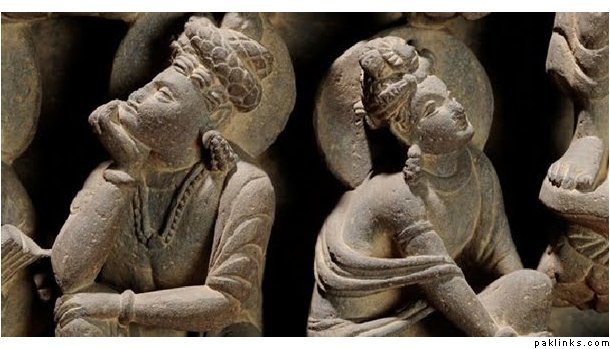
Each carved bit of sculpture, from the colossal to the miniature —- and there are literally thousands of them – is a collector’s item. Even if you aren’t exactly a devotee of the sculpture of the first century A.D., you will find it a challenge to trace similarities between the Gandhara masterpieces and their Graeco-Roman counterparts. Incidentally, it is these stone men and women of Gandhara who greet you so graciously in Taxila, or rather their craftsmen, who first gave visual expression to Buddha and his era. And then there are the excavated ruins. Three distinct cities stretch before you in a surprisingly good state of preservation. With your imagination aided by the carved people who inhabit these cities, you will have little difficulty in picturing crowds on the well laid out streets, families in the spacious houses, priests in the towering stupas and royalty in the great palaces.
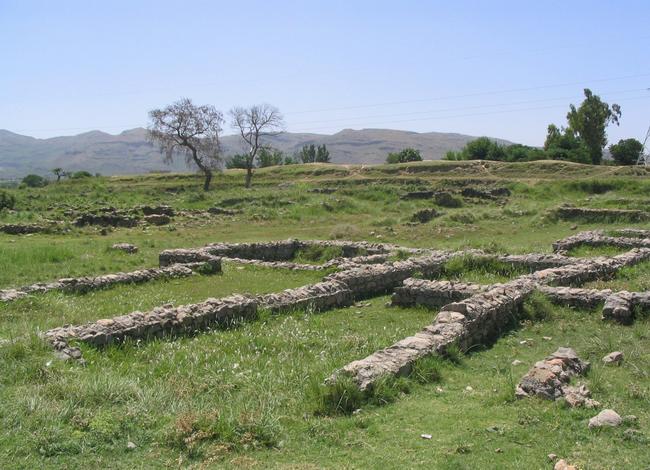
The earliest city, Bhir Mound, dates back to the sixth century B.C. Its irregular streets, cramped houses and mediocre public building indicate its primitive origins.
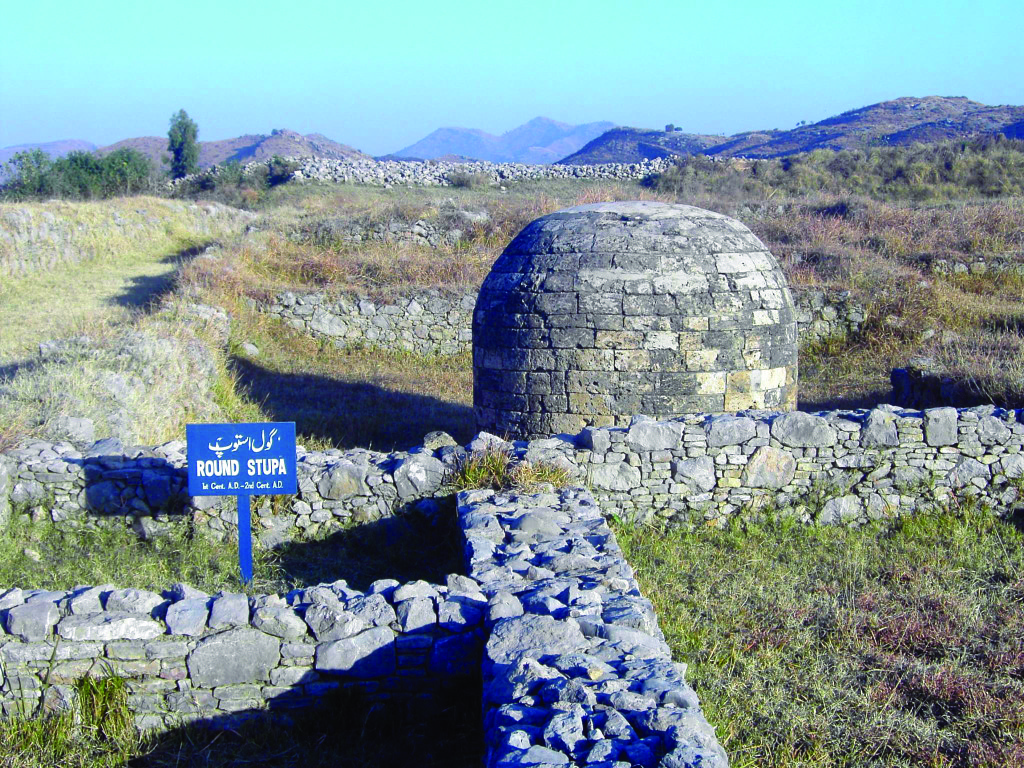
Sirkap, the 2nd ancient City of Taxila was built by the Greco-Bactrian king Demetrius after he invaded South Asia around 180 BC. Demetrius founded in the northern and northwestern Indian subcontinent (modern day Pakistan) an Indo-Greek kingdom that was to last until around 10 BC. Sirkap is also said to have been rebuilt by king Menander I. The excavation of the old city was carried out under the supervision of Sir John Marshall by Hergrew from 1912-1930. In 1944 and 1945 further parts were excavated by Mortimer Wheeler and his colleagues.
Sirkap, on the opposite side of the Tamara Stream, is much newer, having been built in the second century B.C. You will find Sirkap a well-planned city. And as you stroll down its wide streets, you can call at the houses of the affluent and go slumming, as it were, in the more crowded sections where dwelt the common man of the dim and misty past. Note the fortification wall, the long, straight and impressive main street, the Royal Palace, and Apsidal Temple and the Shrine of the Double-Headed Eagle. The third city, Sirsukh, is modern by comparison. It was apparently built by the Kushan kings in the first century A.D. It has not been fully excavated as yet but it is clearly a well fortified, well laid out city, patterned after Central Asian cities and is complete with a suburb.
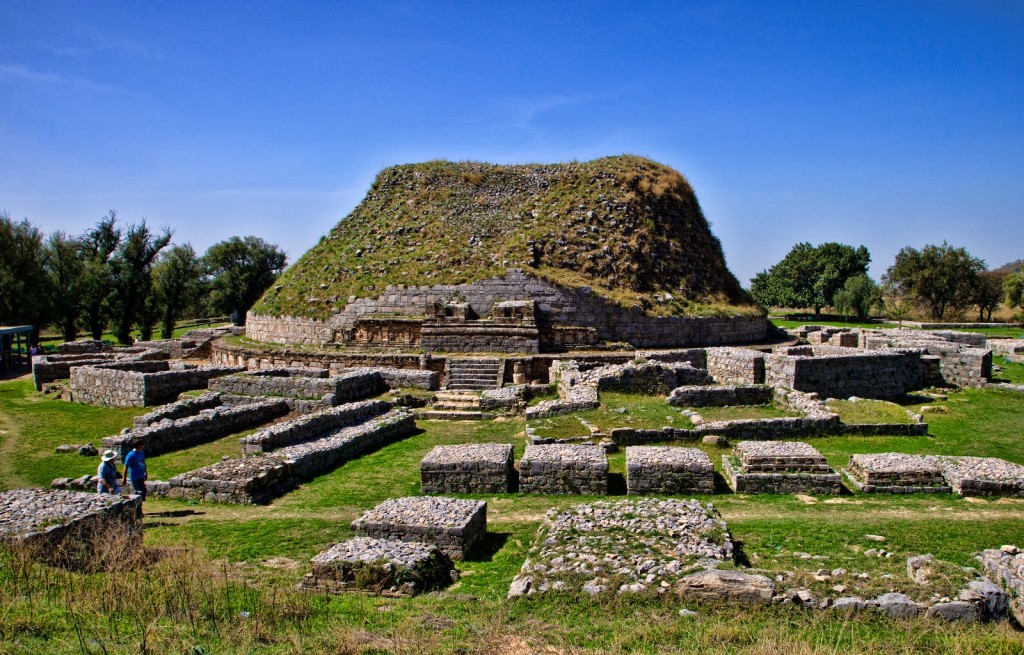
In addition to these three major cities, many important monasteries, stupas and palaces have been excavated all along the Taxila valley. Many more, surely, still lies buried awaiting discovery. If you can’t manage all, you must at least explore the remarkable Dharmarajika Stupa, three kilometers east of the Taxila Museum. It comprises a main building, a monastery area where the monks lived and a series of small chapels. Sacred relics of Buddha and a silver scroll commemorating the relics were found in one of the chapels. A wealth of gold and silver coins, gems, jewellery and other antiques were discovered at Dharmarajika. They are all housed in the Taxila Museum.

There is also Jaulian, another impressive complex of chapels, stupas, quadrangles, and a monastery with assembly hall, storerooms, refectory, kitchen and bathrooms. At five small stupas you will see beautiful stucco relief of Buddha and Bodhisatvas supported by rows of stone elephants and lions. Two miles from Jaulian is another well-preserved monastery — at Mohra Moradu. In one of the monk’ cells here was found a small stupa with almost all the details intact. At Jandial, two kilometers from Sirsukh, is an imageless temple in the classic Greek style, with columns and cornices.
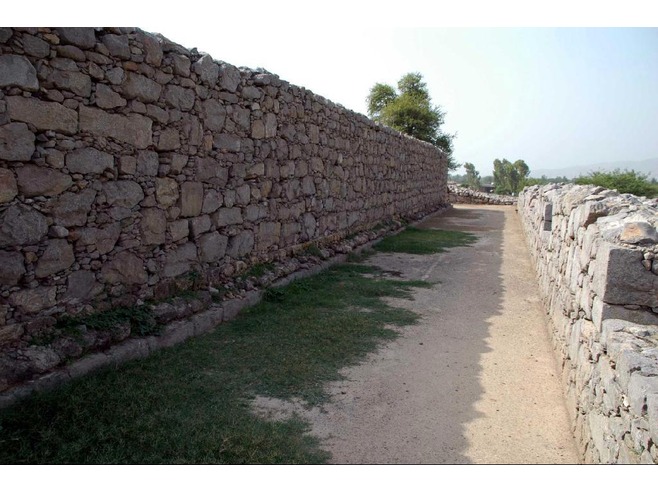
For hikers, there is the Glen of Giri, about five kilometers from Dharmarajika Stupa. Atop the highest peak of a range of hills are two stupas and a fortress built in a cleft near a spring of pure, sweet water. The stucco decoration of the stupas are well worth the climb. No amount of description can do justice to Taxila. To feel and understand its full importance, you simply have to go there. Even today, Taxila is a place of peace. Its pastoral landscape is almost as inviting as its living past. Early man knew what he was doing when 3,000 years ago he chose to site his cities in this delightful, hill-edged valley.
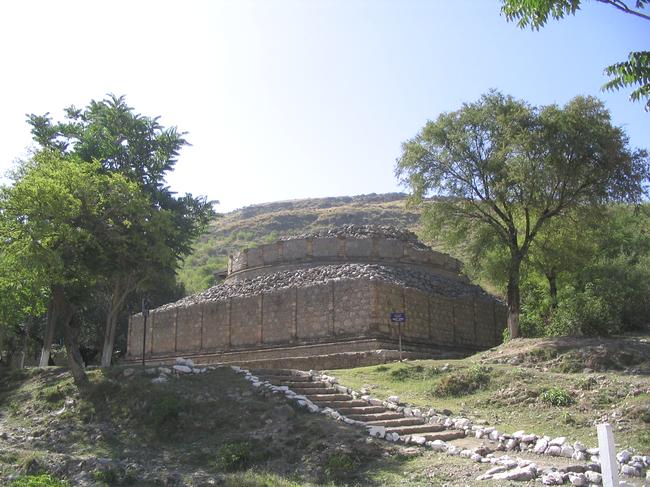
The Museum The archaeological museum a Taxila is a real treasure-house. Its collection of coins, jewellery, relics, and gold and silver caskets alone are worth a king’s ransom. But its real glory comes from stone and stucco – that exquisite Gandhara sculpture crafted at a time when the world was young. Its impressive collection will help you get to know Gautama, the Lord Buddha, better.
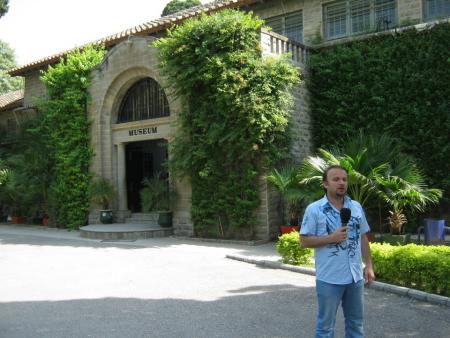
The ivy-covered, Gothic-style museum is in a picturesque garden. There is in the central hall a plaster cast of the Stupa topped with seven umbrellas found in Mohra Moradu. A relief map of the valley pinpoints the location of the different excavated sites. There are rows of cases filled with the famed sculpture, stucco relief, stone, plaster and terra-cotta figures, glass tiles and other objects, toilet articles seals, beads bark manuscripts, silver utensils, carpentry tools, surgical instruments and much else. Museum Timings Winter (1st Oct. — 31st Mar. ) 09.00 hours—16.00 hours Summer (1st April — 30th Sept.) 09.00 hours—12:00 hours and 4.00 hours—18.00 hours The museum is closed on the first Monday of every month.

Accessibility
Only 35 km away from Rawalpindi/Islamabad, it is easily accessible from all entry points. From Karachi, Taxila is just a shot hop away. Board a PIA jet at Karachi and in less than 2 hours you are in Islamabad – the heart of a really colourful and varied tourist region. Then travel by taxi to Taxila to keep your date with Buddha.
By Rail
Comfortable, air-conditioned train services link Karachi and Rawalpindi/Islamabad. The train journey takes about 27 hours. Taxila lies on the main railway route from Lahore to Peshawar.
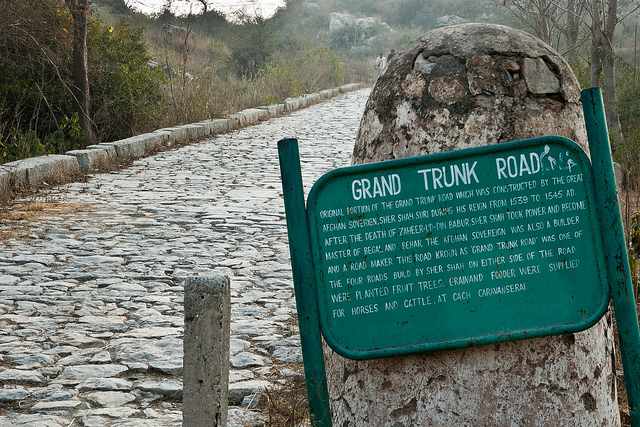
By Road
By car from Karachi to Islamabad can be tedious. But it’s very rewarding between Lahore and Islamabad — which are linked by frequent bus and air-conditioned coach services. Regular buses also ply between Rawalpindi/Islamabad and Taxila and Peshawar.
Distances Karachi – Taxila: 1,478 km Lahore — Taxila: 280 km via N-5 (G.T. Road) and 380 km via M-2 (Motorway) Islamabad –Taxila: 35 km Peshawar — Taxila 136 km
Accommodation
Visitors to Taxila generally stay at nearby Rawalpindi and Islamabad, which have good hotels in every category. Top hotels are; Islamabad Marriott, Islamabad Serena, Best Western and Holiday Inn Islamabad Hotel are located in Islamabad whereas Pearl Continental, Shalimar and Flashman’s Hotel are located in Rawalpindi. Pakistan Tourism Development Corporation has a Tourist Information Office Centre, Motel and Restaurant just opposite the Taxila Museum for the convenience of tourists. Food can be had from the Snack Bar ‘a la carte’. The rest-house near the Museum and the dak bungalow near Nikra, five kilometers away, provide simple, comfortable accommodation. Lodging charges are nominal. Caretakers arranges for meals on payments. Advance booking is done through the Curator of Taxila Museum. There is a Youth Hostel quite close to the Museum with accommodation for 24 persons. It can be used by members Association affiliated with the International Youth Hostels Federation. It costs only a few rupees.
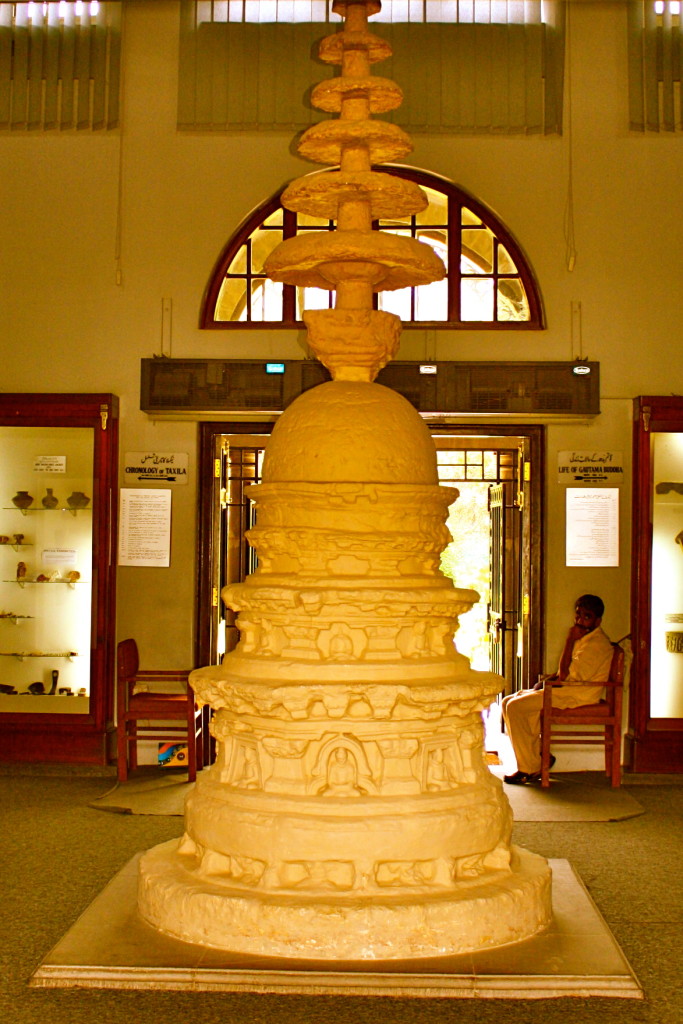
General Information
The ruins of the ancient cities are spread over an area of about 20 sq. kms.The summers are very hot with temperatures soaring to a maximum of over 40 C, but the winters are delightfully cool and pleasant with maximum and minimum temperatures hovering around 5 – 15 C, respectively.The best season for a visit is between September and March. The summer season is from April to September. Although Punjabi and Urdu are the main languages, English is widely spoken and understood. Taxila is situated at an altitude of 512 m. above sea level.
Places of Interest Around Taxila
Islamabad: Pakistan’s new capital has, like Brasilia, been built to order by some of the world’s top architects and planners. It is a picturesque place with wide tree-linked streets and impressive buildings.
Rawalpindi: An old town with a crowded colourful bazaar, and souvenir shops packed with wonderful handicrafts, parks, gardens and a golf course.
Murree: Sixty three km from Rawalpindi is the country’s leading hill station. Built by the British in the old colonial days, Murree perches precariously at a height of 2,275 m. It is famous for its pine-fresh air, its green slopes and glens and spectacular views.
Nathiagali: Thirty five km from Murree, Nathiagali is even higher and more bracing than Murree.
Ayubia: A hill station in the making, famous for its chair-lift, Ayubia is very picturesque.
Abbottabad: One hundred twenty two km from Rawalpindi is the beautiful town of Abbottabad, located over a series of refreshing green low hills.
Sight-Seeing & Excursion Tours
Pakistan Tourism Development Corporation (PTDC) can arrange sightseeing tours and excursions for Taxila, Rawalpindi/Islamabad and other tourist attractions around Islamabad. For reservation, please contact Pakistan Tourism Development Corporation (PTDC), Flashman’s Hotel, The Mall, Rawalpindi (Tel: +92-51-9272017-18 Fax: +92-51-9272020, Email: tayabmir@yahoo.com, info@tourism.gov.pk, paktourslimited@gmail.com Website: www.tourism.gov.pk Facebook:www.facebook.com/PAKISTAN.TOURISM.DEVELOPMENT.CORPORATION
